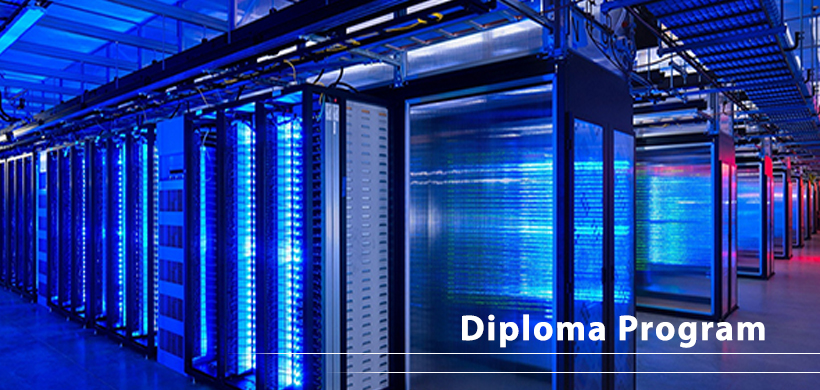Computer Repair Technician A+
Computer Repair Technician A+
Category:
Computer Repair Technician
| Program Length | Total Contact Hours | ||||
| Clock Hours | 90 | Theory Hours | 50 | ||
| Weeks | 4 | Lab Hours | 40 | ||
| Externship Hours | |||||
| Total Hours | 90 | ||||
| Course Number | Course Title | Clock Hours | Lab Hours |
| COMP-1001 | CompTIA A+ Core 1 | 20 | |
| COMP-1002 | CompTIA A+ Core 2 | 30 | |
| Breakdown of Lab Hours | 50 | ||
| COMP-1001 | CompTIA A+ Core 1 | 20 | |
| COMP-1002 | CompTIA A+ Core 2 | 20 | |
| Total of Lab Hours | 40 |
Program Objective
Prepare the student to be able to fix, build, install and troubleshoot a computer or computer system professionally and efficiently. The Computer Operator Specialist training or knowledge is the pre-requisite for this class. Upon completion of this program, the student will be able to take the CompTIA A+ certification exam, to work as Computer Technician, Helpdesk Technician, Network administrator.
Program Description
- Mobile Devices
- Given a scenario, install and configure laptop hardware and components
- Given a scenario, install components within the display of a laptop
- Given a scenario, use appropriate laptop features
- Compare and contrast characteristics of various types of other mobile devices
- Given a scenario, connect and configure accessories and ports of other mobile devices
- Given a scenario, configure basic mobile device network connectivity and application support
- Given a scenario, use methods to perform mobile device synchronization
- Networking
- Compare and contrast TCP and UDP ports, protocols, and their purposes
- Compare and contrast common networking hardware devices
- Given a scenario, install and configure a basic wired/wireless SOHO network
- Compare and contrast wireless networking protocols
- Summarize the properties and purposes of services provided by networked hosts
- Explain common network configuration concepts
- Compare and contrast Internet connection types, network types, and their features
- Given a scenario, use appropriate networking tools
- Hardware
- Explain basic cable types, features, and their purposes
- Identify common connector types
- Given a scenario, install RAM types
- Given a scenario, select, install and configure storage devices
- Given a scenario, install and configure motherboards, CPUs, and add-on cards
- Explain the purposes and uses of various peripheral types
- Summarize power supply types and features
- Given a scenario, select and configure appropriate components for a custom PC configuration to meet customer specifications or needs
- Given a scenario, install and configure common devices
- Given a scenario, configure SOHO multifunction devices/printers and settings
- Given a scenario, install and maintain various print technologies
- Virtualization and Cloud Computing
- Compare and contrast cloud computing concepts
- Given a scenario, set up and configure client-side virtualization
- Hardware and Network Troubleshooting
- Given a scenario, use the best practice methodology to resolve problems
- Given a scenario, troubleshoot hard drives and RAID arrays
- Given a scenario, troubleshoot video, projector, and display issues
- Given a scenario, troubleshoot common mobile device issues while adhering to the appropriate procedures
- Given a scenario, troubleshoot printers
- Given a scenario, troubleshoot common wired and wireless network problem
- Operating Systems
- Compare and contrast common operating system types and their purposes
- Compare and contrast features of Microsoft Windows versions
- Summarize general OS installation considerations and upgrade methods.
- Given a scenario, use appropriate Microsoft command line tools
- Given a scenario, use Microsoft operating system features and tools
- Given a scenario, use Microsoft Windows Control Panel utilities
- Summarize application installation and configuration concepts
- Given a scenario, configure Microsoft Windows networking on a client/desktop
- Given a scenario, use features and tools of the Mac OS and Linux client/desktop operating systems
- Security
- Summarize the importance of physical security measures
- Explain logical security concepts
- Compare and contrast wireless security protocols and authentication methods
- Given a scenario, detect, remove, and prevent malware using appropriate tools and methods
- Compare and contrast social engineering, threats, and vulnerabilities
- Compare and contrast the differences of basic Microsoft Windows OS security settings
- Given a scenario, implement security best practices to secure a workstation
- Given a scenario, implement methods for securing mobile devices
- Given a scenario, implement appropriate data destruction and disposal methods
- Given a scenario, configure security on SOHO wireless and wired networks
- Physical security
- Software Troubleshooting
-
-
- Given a scenario, troubleshoot Microsoft Windows OS problems
- Given a scenario, troubleshoot and resolve PC security issues
- Given a scenario, use best practice procedures for malware removal
- Given a scenario, troubleshoot mobile OS and application issues
- Given a scenario, troubleshoot mobile OS and application security issues
-
- Operational Procedures
-
-
- Compare and contrast best practices associated with types of documentation
- Given a scenario, implement basic change management best practices
- Given a scenario, implement basic disaster prevention and recovery methods
- Explain common safety procedures
- Explain environmental impacts and appropriate controls
- Explain the processes for addressing prohibited content/ activity, and privacy, licensing, and policy concepts
- Given a scenario, use proper communication techniques and professionalism
- Identify the basics of scripting
- Given a scenario, use remote access technologies
-

